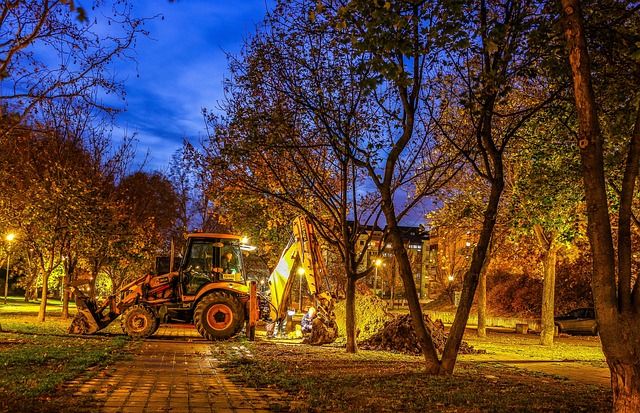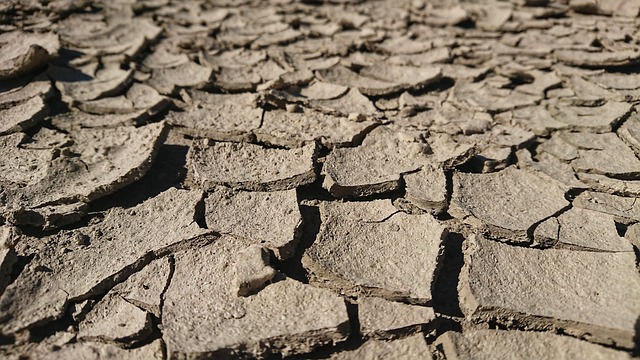This text offers a comprehensive guide on fixing concrete slab cracks, emphasizing the importance of understanding crack causes (including ground settlement, frost heaving, etc.) and types (structural vs. non-structural). It recommends assessing damage, gathering appropriate tools and materials (like concrete patching compounds), and selecting techniques like carbon fiber patching or polyurethane injection for effective repairs. Regular inspection and proactive measures like proper drainage management are highlighted to prevent future cracking. Mistakes to avoid during repairs, such as improper preparation and incorrect sealants, are noted, emphasizing the need for long-term solutions to maintain slab integrity.
Concrete slab cracks can be both structural and aesthetic concerns, with various types and causes. Understanding these issues is crucial for effective fixing foundation cracks. This guide delves into comprehensive crack repair solutions, from assessing damage to preventive measures. Learn about essential materials and tools required, along with step-by-step techniques for repairing foundation cracks. Discover common mistakes to avoid, ensuring long-lasting results in maintaining your concrete slabs.
Understanding Concrete Slab Cracks: Causes and Types

Concrete slab cracks can vary greatly in appearance, from hairline fractures to deep, wide breaks, and understanding their causes is essential for effective fixing foundation cracks. These cracks often develop due to a combination of factors, including settlement, shifting soil, frost heaving, and movements within the concrete itself. Settlement occurs when the ground beneath the slab shifts, leading to cracks as the concrete tries to adjust. Shifting soil, especially in areas with expansive clay, can cause uneven lifting, resulting in cracks. Frost heaving happens during freezing weather, where water expands inside the concrete, pushing it upward and creating cracks. Internal movements within the concrete, such as the release of moisture-related stresses, can also lead to cracking.
Identifying crack types is crucial for determining the best repair method. There are two main categories: structural cracks and non-structural cracks. Structural cracks, like diagonal or vertical cracks, indicate significant movement and may require professional intervention to fix foundation cracks effectively. Non-structural cracks, such as hairline fractures or those caused by minor settlement, might be less severe but still need attention to prevent further damage.
Assessing the Extent of Damage: Steps Before Repair

Before tackling crack repair for concrete slabs, it’s crucial to assess the extent of damage. Start by visually inspecting the slab to identify the size, depth, and pattern of cracks. Look for signs of ongoing movement or instability, as these could indicate more severe issues beneath the surface. Take note of any bulges, dips, or uneven surfaces that might suggest structural compromises.
Next, consider environmental factors contributing to the cracks. Age, weather conditions, traffic load, and ground movements can all play a role. Gather this information to determine if the damage is cosmetic or indicative of deeper foundation problems. If there are signs of active movement or serious structural instability, consult with a professional to address the root cause before proceeding with crack repair for concrete slabs, focusing specifically on fixing foundation cracks.
Materials and Tools Required for Crack Repair

Before beginning the crack repair process, gather your materials and tools to ensure a successful fix for those pesky foundation cracks. The essentials include a concrete patching compound suitable for repairing cracks in foundations, a trowel or putty knife for applying the compound, and a brush to clean away any loose debris from the crack. Additionally, you might need a wire brush or sandpaper to roughen the inside of the crack slightly, enhancing the bonding process. For larger or more significant cracks, a rubber mallet and chisel could be useful for widening and cleaning out the crack before filling it.
Remember that selecting the right materials is key to achieving a durable repair. The patching compound should be designed specifically for concrete and capable of withstanding the weight and stress on foundation walls. Always follow the manufacturer’s instructions for mixing and applying the compound to guarantee the best results when fixing foundation cracks.
Techniques for Fixing Foundation Cracks

When it comes to fixing foundation cracks, there are several effective techniques to consider. One common method is carbon fiber patching, where thin sheets of carbon fiber fabric are applied over the crack and then bonded with a special epoxy. This technique not only fills the gap but also strengthens the concrete, making it an excellent choice for structural integrity.
Another popular approach is using polyurethane injection. This process involves injecting a liquid polyurethane into the crack, which expands and hardens to fill the void. Polyurethane is highly versatile and can be used for both vertical and horizontal cracks. It’s an efficient and cost-effective solution that also provides excellent resistance against water intrusion.
Filling and Sealing: The Step-by-Step Process

When it comes to repairing concrete slabs, filling and sealing is a popular method for fixing foundation cracks. This process involves several steps to ensure long-lasting results. First, clean the crack thoroughly to remove any loose debris or dirt using a pressure washer or wire brush. This step is crucial as it ensures that the repair material will bond properly with the concrete.
Next, apply an appropriate filler designed for concrete cracks. These fillers can be epoxy-based or polyurethane, offering different levels of flexibility and durability. Fill the crack completely, ensuring no gaps remain. After filling, seal the area with a waterproof sealer to prevent future moisture intrusion, which can cause further damage. This step protects the repair work, making it more resistant to weathering and environmental factors, thus extending the life of the concrete slab.
Preventive Measures to Stop Future Cracking

Regular inspection is key to preventing future concrete slab cracking. By keeping an eye on any signs of stress or movement, you can take prompt action before cracks develop. This includes monitoring for uneven surfaces, bulging or shifting concrete, and any visible gaps or separations. Addressing these issues early can save significant costs and effort in the long run, as fixing foundation cracks before they expand can prevent more severe structural damage.
Additionally, ensuring proper drainage around your property is crucial. Efficient water management keeps the soil around your concrete slabs from becoming overly saturated, which can exert excessive pressure on the surface, leading to cracking. Regularly clearing drains and downspouts, and installing appropriate grading to direct rainwater away from your foundation, are effective preventive measures for maintaining the integrity of your concrete slabs.
Common Mistakes to Avoid During Slab Crack Repair

When repairing concrete slabs, many homeowners make mistakes that can compromise the effectiveness of the fix and even lead to further damage. One common blunder is trying to patch cracks without proper preparation. Concrete slabs require a clean, dry surface for optimal adhesion, so skipping this step often results in weak repairs. Using the wrong type of sealant or filler is another frequent error; some products are not suitable for concrete and can cause discoloration or structural issues over time.
Additionally, neglecting to address the root cause of the crack can lead to repeated repair work. Foundation cracks may indicate underlying problems like poor drainage, soil settlement, or structural instability. Ignoring these issues and merely fixing the surface crack will only provide temporary relief. It’s crucial to assess the slab’s overall health and implement solutions that prevent future damage, such as improving drainage or stabilising the soil around the foundation.
